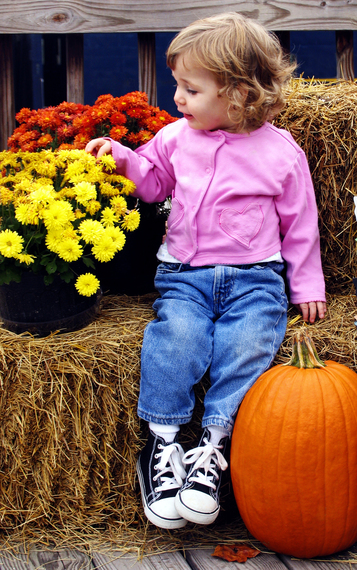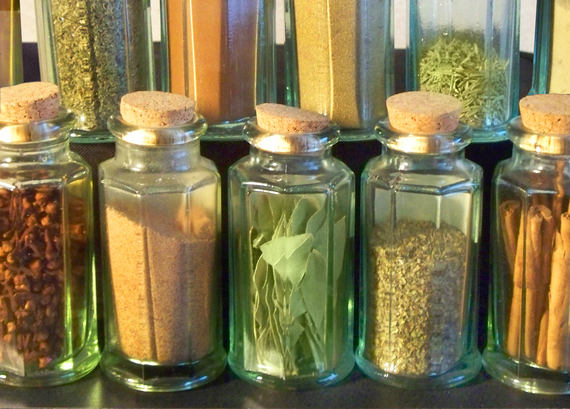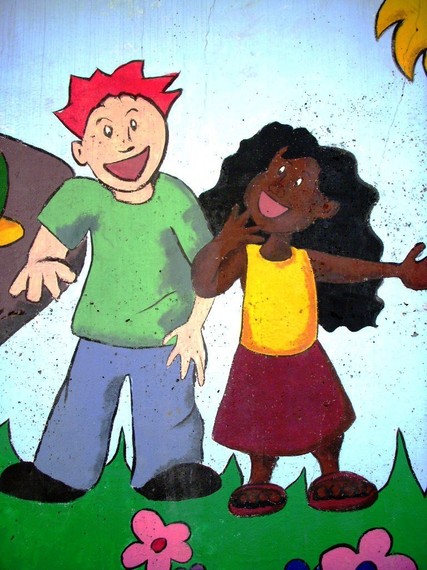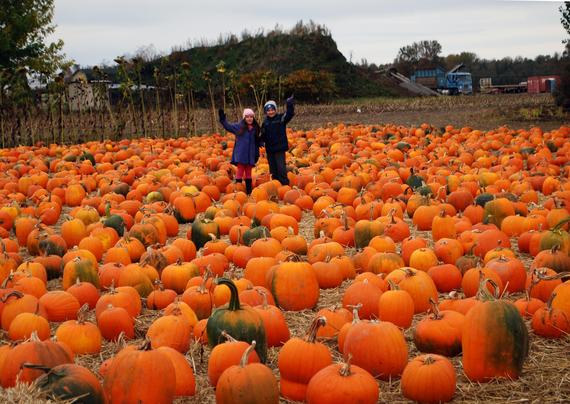A version of this article appeared at MindfulnessForKids.net. For a free, printable PDF-file to use at home or at school please click here and go to the link at the bottom of the page.
Mindfulness can help children relax and become more resilient in school and at home.
Imagine a fourth grader using specific breathing techniques to relax before a test, and picture a 6-year-old knowing how to calm down before bed-time, and then sleep peacefully.
As adults, these children will know how to de-stress at work, and be far more likely to explore natural means of relaxation, such as meditation or deep breathing, before resorting to medication.
The best way to introduce mindfulness at a young age is to do so in a fun and engaging manner.
The following six mindfulness activities do just that. They are designed to help kids become more aware of their bodies and their thoughts. They teach specific techniques to help children relax and de-stress.
The exercises presented here are ideal for children ages 6 to 12. Feel free to adapt them to your child's needs, or to the group of students you work with.
You can choose to do one or two exercises from this page. In this case, pick the ones that most suit you, your needs, and your time frame.
Or, if you lead a mindfulness group just follow along. Doing all the activities will take about 45 - 60 minutes.
Important: Please make sure that especially during Halloween-related activities the emphasis is on fun and enjoyment.
Avoid things that kids could perceive as scary. Children should always feel safe, joyful and calm during mindfulness exercises and meditation.
Ready? Let's start and celebrate the beautiful fall season the mindful way!
Activity 1: Create a Fall Mindfulness Sensory Bin
Sensory bins are all about exploring and becoming aware of different textures, shapes and sizes. The experiences they create can make for wonderful mindful moments.
Prior to this exercise, if time allows, take children on a nature walk. Point out falling leaves, scents in the air, ask children how the cooler air feels on their skin, their face, or their hands.
Have children collect items they see or associate with fall. This can be leaves in various colors, acorns, rocks, etc. Make sure to bring bags on your walk so the children can bring their "treasures" back home or to the classroom.
Once you are back, fill your sensory bin with the wonders of fall. Have each child place at least one item in the bin. In addition to what you found on your nature walk, you can also provide mini pumpkins, gourds and squash. Dried corn cobs will fit nicely into the bin, too.
Now, have each child close their eyes and pick one item from the bin. You can also use a blindfold.
One by one, give each child the opportunity to hold and feel the item in their hand and guess what it is.
Have them feel for texture and size. Ask: "What does it feel like?" "What kind of textures are you feeling?" "Is it rough?" "Is it smooth?" "What does it smell like?"
Have them touch the item with their cheek. Ask: "What does it feel like?" "Does it feel different on your cheek than on your hand?"
Have the child guess what fall item they are holding.
At the end of the activity, have children put all the items back in the bin and put it away.
Activity 2: Smell me! What am I? An Olfactory Guessing Game.
This activity helps with developing an often neglected sensory organ: The nose, and sense of smell.
Fall and the approaching holidays with their yummy food and baked goodies are an exquisite time to give some love to an often overlooked sensory experience.
Prior to conducting this mindfulness exercise, bring out fall related herbs and spices from your spice rack or kitchen cabinet. Think pumpkin spice, vanilla, cinnamon, clove, etc.
Aroma oils work, too.
Have children smell the various scents, and guess what they are. At the end of the activity ask kids which scent resonated with them most.
Ask: "Which scent, out of all the ones we smelled, do you remember the most?" Then ask what that particular scent reminds them of. Have children share their experience with the class.
Optional: As "homework" ask children to become mindful of one scent each day for the next five days. Have children write down or draw their experience in their mindfulness journal. After five days, or at your next class, have children share their experience, or read from their journal.
Activity 3: Mindful Movement
This activity helps children become aware of their bodies. It shows kids how to consciously relax their muscles, and teaches children important relaxation techniques.
Ahead of the activity, prepare fun and happy Halloween music, for example, "Monster Mash" by Bobby Pickett, and have it ready to play to the children.
In preparation for this activity, and before you put on the music, ask children to walk around the room as stiff as a mummy for Halloween.
Ask kids: "How does a mummy move?" (stiffen your body). Have children demonstrate and explore for a couple of minutes how to move around with stiff arms and legs.
Next, ask children to pretend to be a leaf in fall. Ask: "How does a leaf move through the air, once it detaches from its branch?" (light and airy, flexible, etc.).
Have children move like a leaf gliding through the air. Give them a couple of minutes to explore this type of movement.
The goal of this activity is to have children experience the difference between holding tension in their bodies (mummy) and being relaxed (leaf).
Now, play the music you picked out earlier. Have kids move to the music like a mummy, then move like a leaf. Take turns moving this way or that way.
At the end of the activity, have children sit down and talk about their experience. Discussion questions could be:
"What did it feel like to move like a mummy?"
"What was it like to move like a leaf?"
"How did each of the different ways of moving feel in your body?"
"What did you do to quickly relax your muscles when you had to change from walking as stiff as a mummy to moving smooth like a leaf?"
After a fun, very active musical activity, the following mindfulness exercise can act as a wonderful transition to a more quiet activity, such as a meditation, as it calms children down, and lets them refocus.
Activity 4: Meditation Jar
As mentioned before, this activity helps children calm down after exercises that involve a lot of movement. It can also help children settle down when they are emotionally upset, or as a transition activity before going to sleep.
It works very much like a snow globe.
Here is how to prepare for this activity ahead of time: Take an empty, see-through glass or plastic jar that comes with a lid. Fill it with water. Then, add glitter and tiny Halloween or fall related items that can float in the water-filled jar.
For this activity have children sit in a circle. Take out your prepared jar and shake it, so the tiny, colorful items in the jar start dancing and twirling all around the water.
Have children watch how the items eventually start to slow down and settle at the bottom of the jar. If the children would like, repeat!
Explain to the children that our thoughts can very much work the same way: Sometimes there is a lot of activity in our brains. We think lots of different things, and very fast.
It is also possible to slow our thoughts down. Doing that, we can also calm down our body and our mind, and become very peaceful.
Meditation is one way of calming ourselves.
If you are interested in a fall-related mindfulness meditation for kids click here.
Activity 5: Breathing Exercise
This activity helps children become aware of their own breath and what happens in the body when you breathe. It teaches children body-awareness and serves as a tool for relaxation just like the meditation jar exercise.
This exercise works great as a transition to a meditation activity. It can also help with bed-time.
For this activity hand out mini pumpkins, orange beanbags or fall leaves to the kids. Tell the children to lay down, and put their mini pumpkin on their belly. Ask children to carefully watch their little pumpkin rise and fall with each breath.
Have children inhale and exhale for three to five rounds. Ask children to keep watching the pumpkin on their belly rise and fall with each breath.
After this activity, you can either transition to a meditation as the children are already laying down, or have children sit up and discuss what their experience was.
Activity 6: Creative Arts Project
It is a great idea to finish a mindfulness class with a fun creative arts project. Pick one of the following ideas as an end-of-class activity.
The ideas are based on the mindfulness exercises above and make for a wonderful conclusion of your mindfulness session.
Idea 1: Mummy painting. This art project ties in with the mindful movement exercise from above. Give each child a black mummy cut-out. Mix a little bit of white acrylic paint into the glue bottle, or use color or glitter glue that does not disappear after it dries. Have children swirl the glue-paint all over the mummy and let it dry.
Idea 2: Make your own meditation jar. This creative project can serve as a great follow-up activity to the meditation jar exercise we did earlier. Give each child their own transparent jar with lid. Have children add glitter and small fall or Halloween items that can float inside the jar when you shake it. Then, add water and close the lid. Have children shake their jars, watch their items swirl and twirl and then settle.
Idea 3: Decorate and paint a funny face on your mini pumpkin. Remember the breathing exercise from above? Have children decorate the mini pumpkin they used for the breathing exercise. You can use acrylic paint to paint the pumpkins, or glue on fun decorations.
Idea 4: Leaf Painting. If you did the fall mindfulness meditation, then this a great art project to do right after. Here is what you do: Collect large fall leaves, and press them for several days. Then, have children paint them with acrylic paint. You can have the children paint an orange base, and then paint small fall or Halloween items or landscapes on it. Use a smaller paint brush for this.
Now, I am curious to hear what kind of feedback you received. What was your own experience?
Please leave your thoughts in the comment section below. I am always happy to hear from you!
P.S. If you would like a free, downloadable PDF-file of the mindfulness exercises click here, scroll down and find the link on the bottom of the page. Enjoy!
More from MindfulnessForKids.net:
Children's Fall Mindfulness Meditation
Mini Mindfulness Exercise for Kids: What if your right shoe was on your left foot?
Photos courtesy: Morguefile.com






